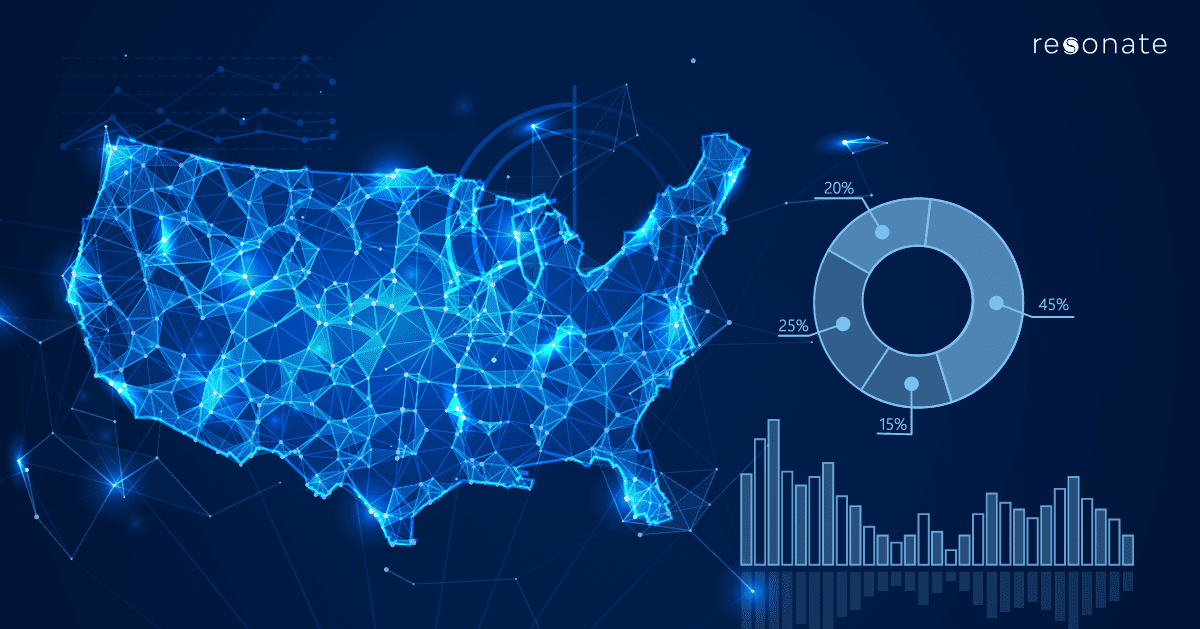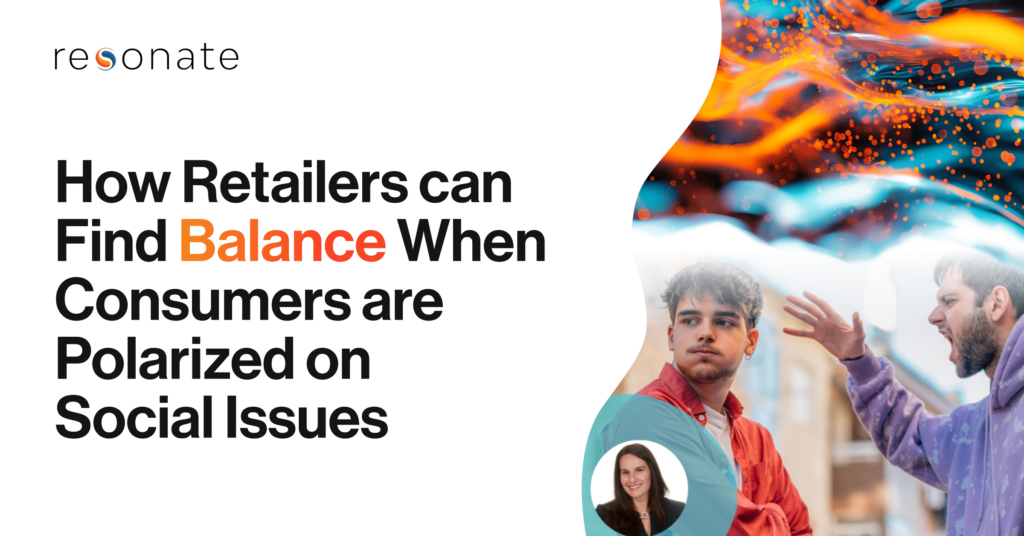We are not politicos. We are not pollsters. We are people who are passionate about people and data science, and powered by a cutting-edge, AI-driven consumer insights Ignite Platform reflecting more than 14,000 attributes about 200 million US adults.
In our day jobs, we’re surrounded by deep data on US consumers and their purchase drivers, personal values, and online and offline behaviors. So, we couldn’t help but see if we could use it to predict the outcome of the presidential election – you know, just for fun.
Methodology
Unlike conventional pollsters – who are increasingly susceptible to error from non-responsiveness – we used machine learning algorithms trained with proprietary behavioral data from our National Consumer Study married with data from tracking tens of billions of web events per day. The cross-validated model then predicted how non-survey-respondents would answer key questions such as for whom they intended to vote.
Now, as any good stewards of statistics must do, we want to make clear that our model wasn’t – nor could it ever be – a magical “show me who’s going to win” button. But we can say, without a doubt, that our model is superior to even the top dogs in polling. Don’t believe us? Take a look at the numbers below.
Resonate vs. FiveThirtyEight’s Polling Average
We looked at every state decided by less than 4% and compared how we did against FiveThirtyEight’s polling average, looking at who was closer on a percentage basis to actual vote share margins.
And we got it closer than FiveThirtyEight’s Polling Average in 6 out of 8 states. Not too shabby for a hobby.
Georgia ✔
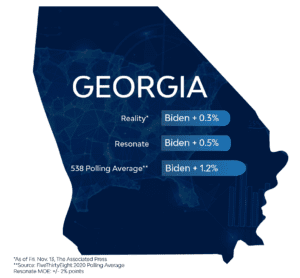
Florida ✔
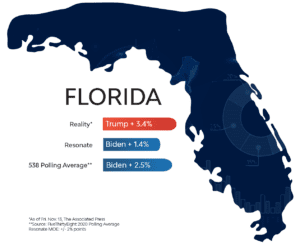
Side note on Florida: As for the most talked-about county on the (first) evening of the election – our zip-code level predictions in Sumter and Miami-Dade counties were spot on. Why did we get this right? Because our platform recognizes the Hispanic population is not a homogenous block. Ethnic nuances play an important role in engaging and motivating this audience.
North Carolina ✔
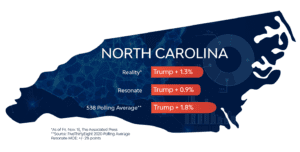
Arizona ✘
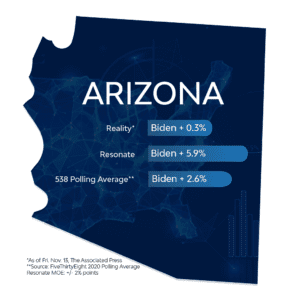
Pennsylvania ✔
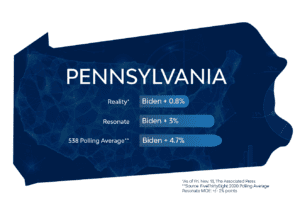
Michigan ✔
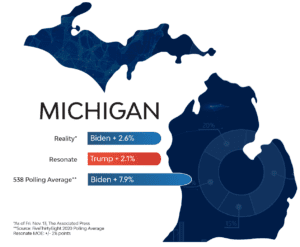
Wisconsin ✔
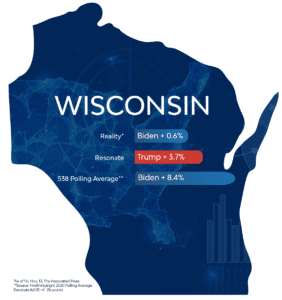
Nevada ✘
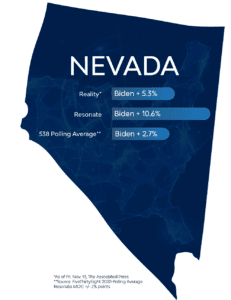
Why did our model out-perform pollsters?
While their accuracy has improved in recent years, pollsters continue to be plagued by decreasing response rates, making it difficult to garner a truly representative sample. And with such a contentious election, an unpredictable number of “shy voters” emerge, who won’t tell their family and friends — let alone pollsters — their voting preferences.
Pollsters (and thus, many political campaigns) are also still relying on voter files – those sheets that list voters’ locations and party affiliations (you know, the one you wrote down when you registered, potentially *years* ago). This fails to consider the very real possibility that people will stray from their affiliation – particularly in heated elections following months of a global pandemic and social unrest.
Say what you will about pollster methods, but what it boils down to is this: outdated, incomplete data and flat demographics = inaccurate results.
To win, campaigns must go deep. We can no longer rely on rigid demographic boxes. We need to look at the values-driven humans behind the vote.
As you can tell from spending maybe 30 seconds on Twitter, not all Democrats are the same and not all Republicans are the same, and nor are ‘suburban moms’ or ‘Hispanics.’ This may seem obvious to you, but that’s exactly the pitfall of using flat voter files – they lump everyone into categories and fail to account for individual-level differences in values, motivations, and behaviors.
So that’s what we did. Using supervised machine learning techniques, we were able to leverage our vast attributes – AKA those human-level values, decision-drivers, positions on issues, and more – and combine that with the impact of external forces like COVID-19, the Black Lives Matter movement, and other recent events.
This behavioral research + tens of billions of daily web events enables us to track what voter sentiment actually is, going deeper than pollsters can, painting a picture of why voters voted the way they did – based on the values that drive them as humans, not their outdated, flat demographics.
In conclusion
Our results may not have been perfect, but they were significantly closer than the folks who “predict” elections for a living. We think we’ll keep election predictions as a side hobby for now, but just think – if we can get this close to the mark for the 2020 presidential election, imagine the insights we could unearth on your customers and prospects.
Want to see how our AI-driven platform can enhance your marketing ecosystem? Request a demo or give us a call at 855.855.4320.
